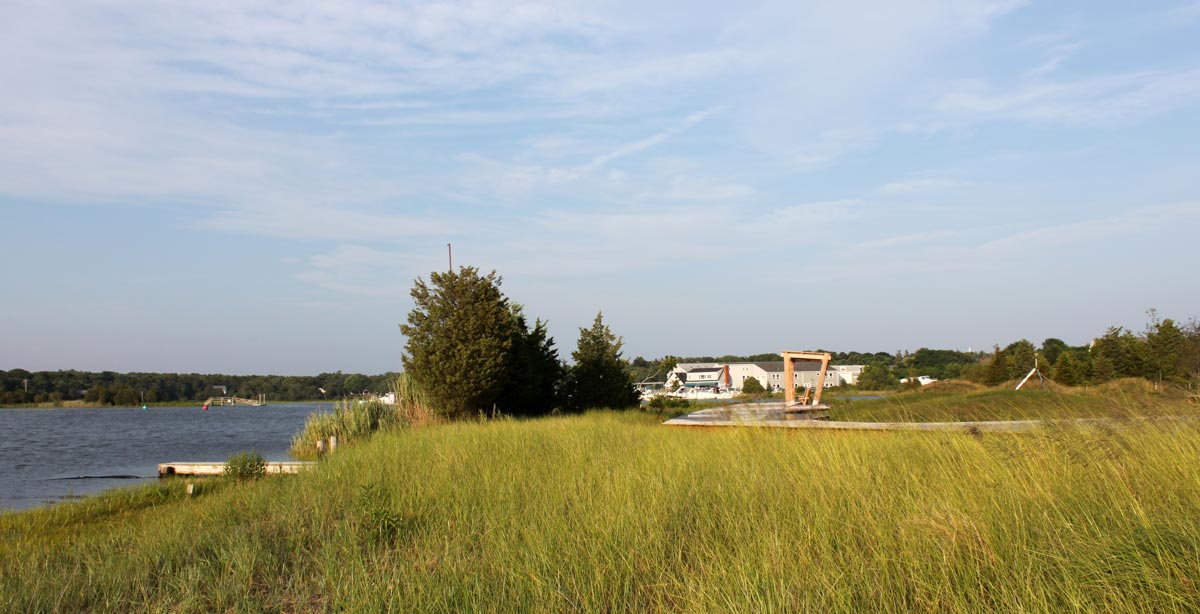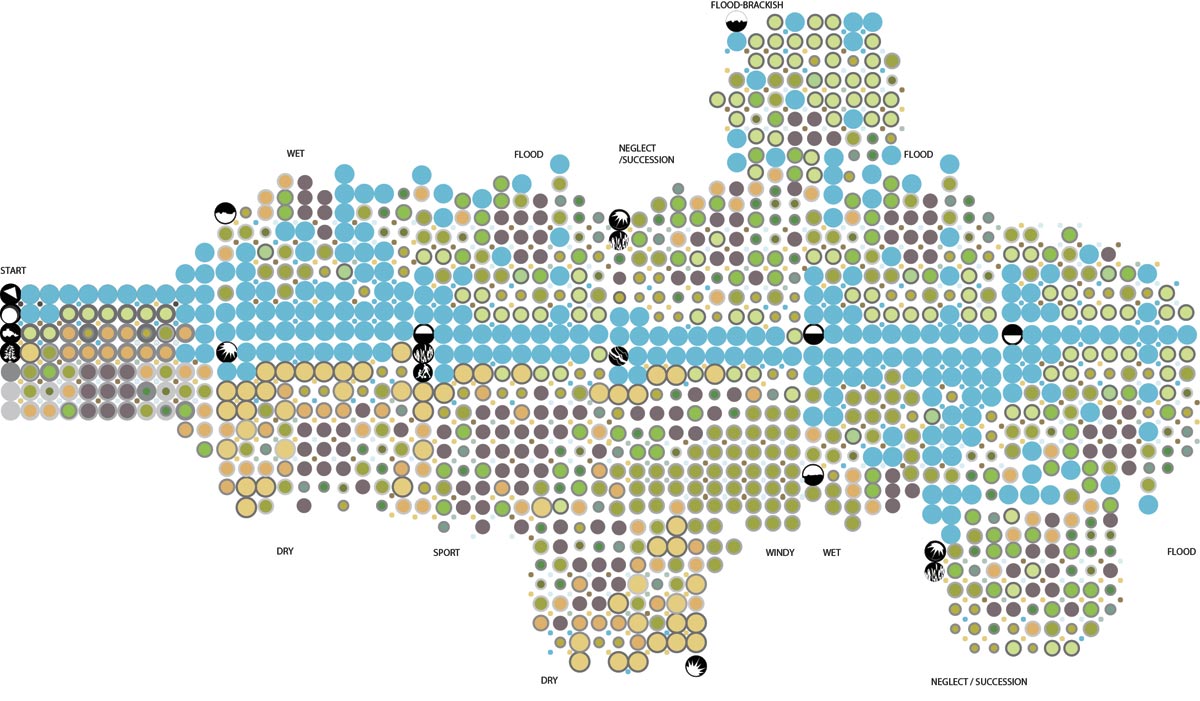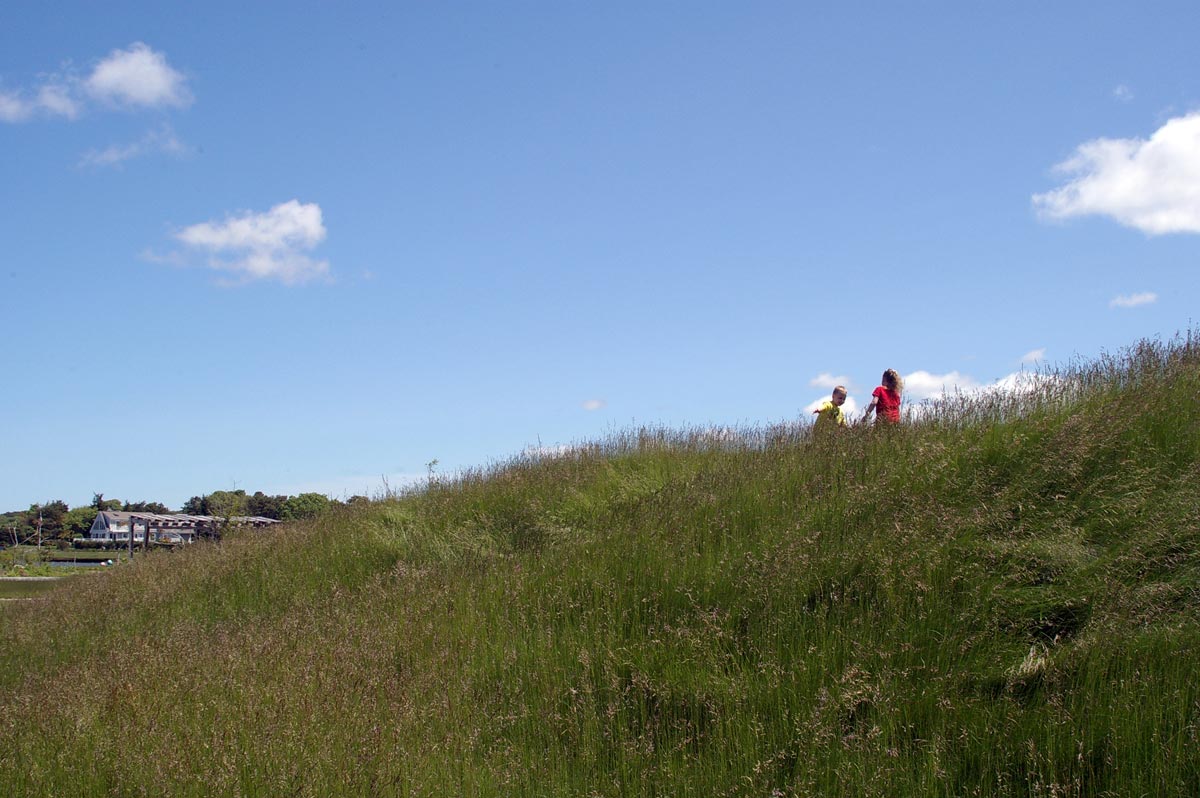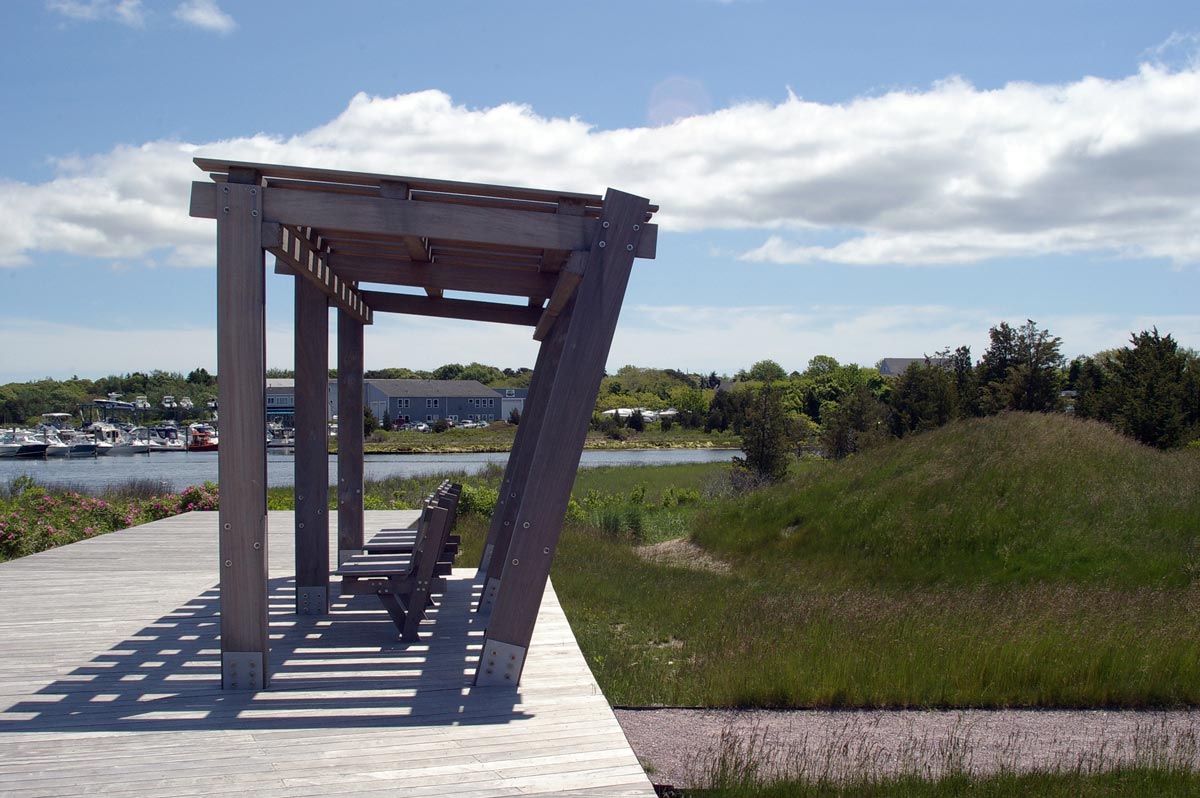Bass River Park is a sustainable ecological park that responds to changing environmental conditions. The site is filled salt marsh—compacted and deadened. The ambition is to re-ignite social and ecological dynamics.
The strategy looks to establish a varied landscape field—an earthen carpet of hillocks— that supports short- and long-term competition among four vegetal communities characteristic of the region: red cedar meadow, sand plain, wet meadow, and salt marsh. Long-term environmental changes, short-term disturbances, and even use or maintenance practices can subtly or radically shift the balance among vegetal types, allowing one or another community to establish predominance—if only temporarily.
Human activity is accommodated straightforwardly, yet flexibly. A thirty-foot-wide arcing boardwalk is situated along the river, mimicking the constructed but now ecologically fragile shoreline. Planted concrete pavers enter the site as a driveway, but quickly expand as a broad field that spreads to touch the nearby hillocks; in doing so, they create a permeable yet reinforced field that alternately or simultaneously hosts parking and public events. And a series of land-based structures (showers, changing screens, restrooms, shade structures, kayak rental hut) and water-based structures (docks and piers) are scattered across the site, momentarily intensifying the landscape field.





